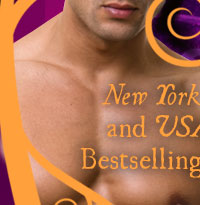When writers talk about building a “world”—what is a world?
A world isn’t necessarily a “where”. It’s the congregated circumstances your characters work inside. So, what the heck does that mean?
For the TV series, Buffy the Vampire Slayer, Buffy’s world is set in Sunnydale, California. At the start of her journey, she’s in high school and the most important activities she’s involved in are her cheerleading, passing her classes, and of course, boys. All by itself that can be pretty interesting stuff, right?
Joss Whedon added the whole “You are the One” role that Buffy is forced into accepting as THE Vampire Slayer, and suddenly, there’s a whole new texture to her world. Monsters come out of the woodwork, a Hell Mouth opens to release demons on the world, and she’s the only thing standing between the innocent human world and The Big Bad.
She comes into her “weapons”, her powers, which include her super-human speed, strength and fast healing. She’s a natural with cross-bows, pointy stakes and knows instinctually how to kill many of the beasties she encounters.
All the pieces fit together like a tapestry, and her journey convinces us this world exists, just as she must be convinced every step of the way.
Now her problems are bigger, her conflicts are bigger, and the antagonists that she must face in each episode of her total journey are bigger. The external plot really forces the growth of her character.
What was Buffy’s world? Every aspect of her life.
Her home life where she hides her role from her mother while trying to explain why she sneaks out at night, why her grades suffer, and why she keeps getting into fights.
Her inner life which she hadn’t really thought much about until she had to “dust” a vamp or two. Even then, she was never convinced she had the spiritual strength of conviction or the intelligence necessary to be the last hope of the world—not until the very last episode when she comes up with the plan to share her “power” with her “slayers-in-waiting”.
Her romantic life which gets pretty complicated when she falls in love with the very creature she’s destined to kill—and where making love with him can turn him into a soulless creature if he experiences that one moment of true happiness.
So, the world you build contains all the aspects of your character’s existence.
Why does it matter that every conflict, every hero, every villain, every resolution has to be bigger in a paranormal story?
1) You can have a true “super” hero. And don’t we all want guys who can leap tall buildings in a single bound, are stronger than Popeye, and better in bed than Casanova? When we suspend belief while reading a work of fantasy, it doesn’t seem too silly at all!
2) Doesn’t a reader want to escape into fantasy and join the quest to find The Holy Grail rather than looking for matching socks coming out of the dryer?
3) When our heroine faces pure rip-your-eyeballs-out evil, we don’t really want to believe the characteristics embodied by that villain truly exist. We can be scared, revolted, fascinated, but because it’s a good paranormal tale, we don’t have to close the book and wonder what the world’s coming to.
4) Don’t we all want to save the world?


















